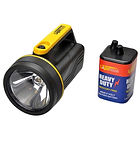
Group 0:
noble gases
The noble gases are elements in the last column of the periodic table, they are very unreactive, colourless gases, it is because all of their outer shell has 8 valence electrons, that means they are already full, therefore they are unreactive which means inert.
characteristics and properties
The noble gases are colourless, they all have low boiling points and melting points, just like most of other non-metals. The boiling points and melting points increase as you go down the group. Their density is also low since they are gases, and the density increases as you go down the group.
The noble gases have a full shell of valence electrons, which means they are stable, and were believed to be unable to produce any compounds with other elements due to their stable electron structure, however, this is no loner true since some of them had reacted with other elements, usually the halogens such as fluorine. Therefore, their reactivity is low, and increases as you go down the group.
Bonding
The noble gases have full outer electron shell therefore they are very stable.However, when they are ionized or under pressure, they sometimes react with very reactive ions, such as the halogens, where they lose one electron and become a positively charged ion to form a compound.

trends: (As you go down the group)
- Melting point and boiling point increases
- Density increase
- Reactivity increases
Uses
In real life, the noble gas are used in different ways.
- Helium is used to fill the tires of aircraft, and balloons, since it is difficult to catch fire.
- Neon is used in sign-tubing since it glows light when electricity goes through it.
- Argon is used in light bulbs, because it doesn't react with other metals.
- Krypton and xenon are used in the bright electric lamps because they generates really bright light as an electric current.
Helium

argon

neon

krypto & xexon

sources:
-Properties of noble gases. (n.d.). Retrieved December 19, 2016, from http://www.bbc.co.uk/schools/gcsebitesize/science/add_edexcel/periodic_table/groupsrev7.shtml
-The Noble Gases (Group 18) - Boundless Open Textbook. (n.d.). Retrieved December 219, 2016, from https://www.boundless.com/chemistry/textbooks/boundless-chemistry-textbook/periodic-properties-8/variation-in-chemical-properties-70/the-noble-gases-group-18-330-1854/
-H. (2014). Do the Noble Gases Form Chemical Compounds? Retrieved December 19, 2016, from http://chemistry.about.com/od/noblegasfacts/a/Noble-Gas-Compounds.htm
-Groups :. (n.d.). Retrieved December 20, 2016, from https://www.learner.org/interactives/periodic/groups4.html